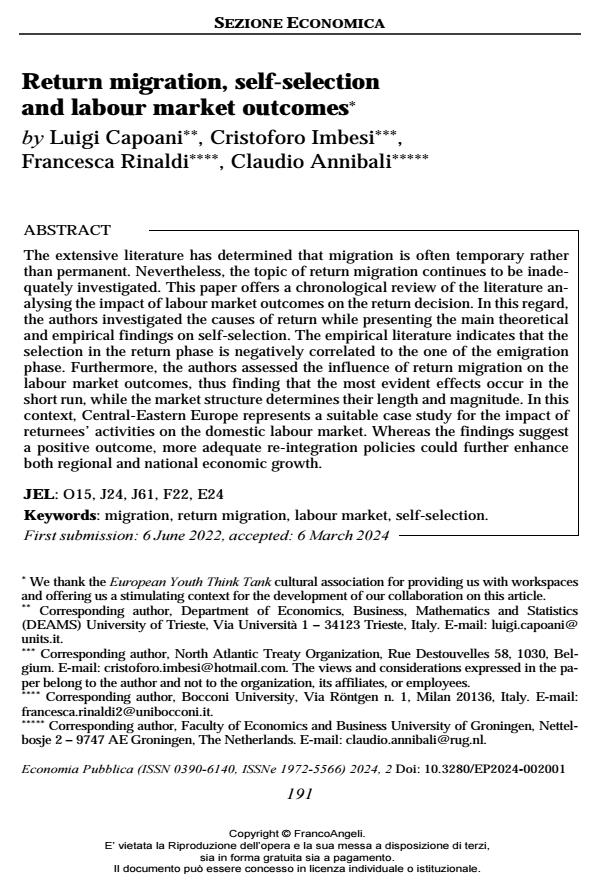Return migration, self-selection and labour market outcomes
Journal title ECONOMIA PUBBLICA
Author/s Luigi Capoani, Cristoforo Imbesi, Francesca Rinaldi, Claudio Annibali
Publishing Year 2024 Issue 2024/2
Language English Pages 38 P. 191-228 File size 206 KB
DOI 10.3280/EP2024-002001
DOI is like a bar code for intellectual property: to have more infomation
click here
Below, you can see the article first page
If you want to buy this article in PDF format, you can do it, following the instructions to buy download credits

FrancoAngeli is member of Publishers International Linking Association, Inc (PILA), a not-for-profit association which run the CrossRef service enabling links to and from online scholarly content.
The extensive literature has determined that migration is often temporary rather than permanent. Nevertheless, the topic of return migration continues to be inadequately investigated. This paper offers a chronological review of the literature analysing the impact of labour market outcomes on the return decision. In this regard, the authors investigated the causes of return while presenting the main theoretical and empirical findings on self-selection. The empirical literature indi-cates that the selection in the return phase is negatively correlated to the one of the emigration phase. Furthermore, the authors assessed the influence of return migration on the labour market outcomes, thus finding that the most evident ef-fects occur in the short run, while the market structure determines their length and magnitude. In this context, Central-Eastern Europe represents a suitable case study for the impact of returnees’ activities on the domestic labour market. Whereas the findings suggest a positive outcome, more adequate re-integration policies could further enhance both regional and national economic growth.
Keywords: migration, return migration, labour market, self-selection.
Jel codes: O15, J24, J61, F22, E24
Luigi Capoani, Cristoforo Imbesi, Francesca Rinaldi, Claudio Annibali, Return migration, self-selection and labour market outcomes in "ECONOMIA PUBBLICA " 2/2024, pp 191-228, DOI: 10.3280/EP2024-002001